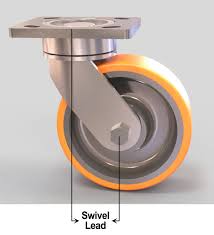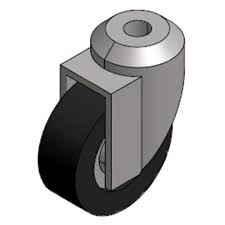How to Improve Caster Performance
Considering the fact that casters perform the very important task of helping us move items (such as furniture, chairs, supplies, etc.) that would otherwise be very cumbersome to move, it’s important that they work and function as necessary. After all, the last thing you want is to be moving a large crate of heavy-duty supplies and one of the casters comes apart. That would be disastrous – and potentially dangerous – for you.
Furthermore, when your casters are not working at their peak optimal performance, it results in you, the user, having to put forth more effort to move the same pieces of equipment. Depending on the size of the equipment, this can lead to bodily strains, injuries, fatigue, and more.
Therefore, while it is definitely important to purchase the right casters from the start, it is equally important to practice proper maintenance of the casters as time goes by. By taking good care of your casters, they will continue to take care of you – and literally lighten your workload – for many years to come.
Let’s take a look at a few ways to improve your caster performance so that you can get the most out of them in their lifetime. These tips are not rocket science. Rather, they are practical, applicable pieces of advice that work wonders for your casters. Let’s begin.

#1: Be mindful of capacity overload.
More often than not, the reason why many casters end up having a short life span is due to capacity overload, which basically means using them to move items that are too large. When you first buy the casters, the original packaging will specify the maximum weight capacity for them.
To keep this from happening, simply be mindful of the workload that your casters are capable of maintaining. This simple tip can add years to the life of your casters.
#2: Keep your “caster environment” clean.
In most typical scenarios, casters are used on generally smooth surfaces, such as tile, wood, cement, or metal flooring. However, depending on your specific use of the casters, they may end up being used on an uneven or rough surface. Over time, this can cause your casters to corrode or wear away faster than usual.
To ensure that your casters last a long time, opt for casters that are suited for your environmental conditions. For example, some casters are meant to be used on wet surfaces, while some are capable of being used on rough or corrosive surfaces. Another example of an environment that requires special casters is one that involves chemicals. In an industrial plant where chemicals are often present, it is important to opt for casters that are immune to corrosion or chemical deterioration.


Lorem Ipsum is simply dummy text of the printing and typesetting industry.
#3: Opt for the correct bearing type.
Many people often miss this important step, which is to choose the correct bearing type for your casters. The bearings are the pieces of the caster system that limit the movement to a certain motion, which ultimately reduces friction between the individual pieces of the caster (which of course causes deterioration).
When you use the wrong type of bearing for your casters, this can lead to premature failure of your casters. To avoid this and prolong the life of your casters, make sure that you opt for bearings that fit your equipment properly.
#4: Stop rolling your casters faster than they’re meant to go.
Whether you’re rolling around your office chair, kitchen island, or large pieces of equipment in a factory, people tend to roll their casters much faster than they were designed to move. When you move equipment on casters at higher speeds than normal, this can actually cause damage to your casters, due to corrosion, overheating, material breakdown, or even damage to the bearings.
It’s also important to note that not all casters are created equal. For instance, while you can probably get away with rolling your office chair around at faster speeds, you shouldn’t do the same with alloy metal casters in an industrial setting, especially when heavy equipment is involved.



#5: Don’t use your casters in extreme temperatures (unless they’re special casters).
In most average cases, casters will never be exposed to any extremely hot or cold temperatures. However, this may be the case in a few situations, especially when the casters are used in an industrial or food/freezer setting.
The thing is, extreme temperatures can have a huge negative impact on the mobility performance and life span of your casters. When rubber casters are exposed to extremely hot or cold temperatures, the material tends to break down much quicker than it would have otherwise. The same concept goes for many other materials as well, such as metals, plastics, and polymers. When choosing your casters, opt for casters that match the environment you’re working in. For example, if you’re needing a great option for extremely cold environments, perhaps a stainless steel caster might work well for you.
In closing
As you can see, there are several ways that you might be wearing down your casters quicker than normal that you probably don’t even realize. It might seem like a small decision at first, but selecting the right casters for the job upfront will save you a lot of money and headache in the long run.
Casters are not meant to last a lifetime, but that doesn’t mean they can’t last a very long time, either. By following a few simple preventative maintenance tips, such as not pushing your casters too fast and not overloading them, can ensure that your casters are in optimal running shape for a very long time.

